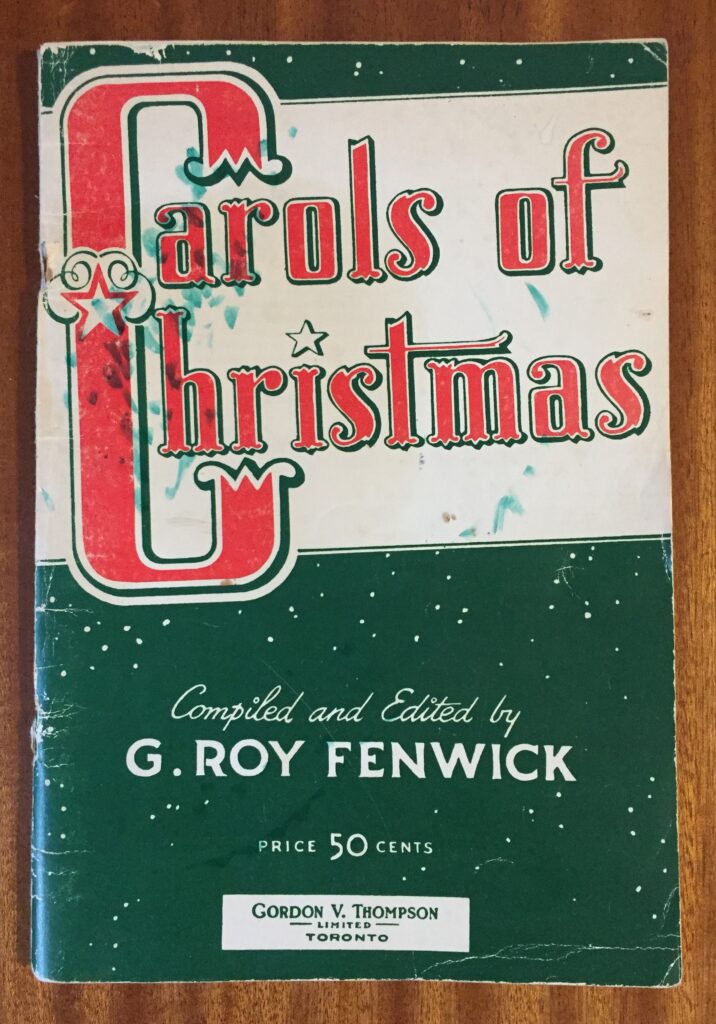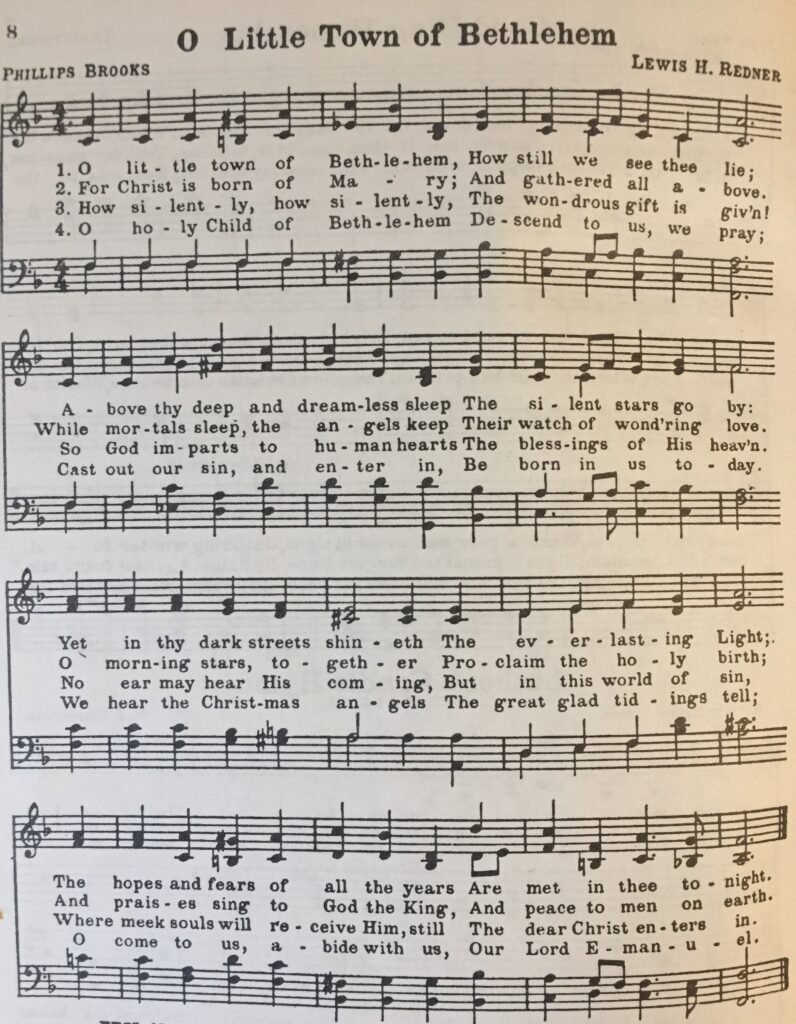Making A Guitar Arrangement Of “O Little Town Of Bethlehem”
Every Christmas, I make a fair bit of festive sheet music for my students and myself. One of the pieces I made this year is a guitar arrangement of the carol O Little Town of Bethlehem. This piece is at the intermediate level.
When it comes time to make a piece of Christmas music, I have a secret goldmine that I return to year after year – Carols of Christmas by G. Roy Fenwick, published in Toronto by Gordon V. Thompson Limited in 1946. Carols of Christmas is a slim volume of carols and hymns, written in four-part vocal style. It has an excellent introduction that is surprisingly progressive for its time, making a strong argument for the place of secular and pagan music in the Christmas canon.

Counterintuitively, the fact that this volume is written for vocal harmony actually makes it extremely useful for making arrangements for pretty much any other instrument. In four-part vocal style, the highest pitched voice (soprano) is almost always the melody – the notes you’d sing if you were singing solo. The lowest pitched voice (the bass) is often singing the root of a chord, or another chord tone, or sometimes a passing tone in between chord tones.
When I am making an arrangement for guitar, that’s where I start.

The G.R. Fenwick vocal score is in the key of F – not an ideal key for the guitar player, but by transposing down one half step, we come to the guitar-friendly key of E. For a song with a melody that covers an octave, it is helpful to have at least some of the bass notes on open strings, and the key of E gives us both the E and A to work with.
For the most part the bass is playing the root notes, but there are some great walking passages from the vocal score that I was able to work in, such as in measure 5 where the bass walks down from the tonic (E) to the flat 7th (D) to land on C#.
Once I’ve got a handle on the highest and lowest voices, I get to the fun part – adding the middle voices. R.G. Fenwick was a master of the alto and tenor voices. There is so much colour added by the middle voices in these arrangements, so I try to preserve as much as I can. For my arrangement of O Little Town of Bethlehem I was able to keep the alto voice (second highest voice) pretty well intact, playing a lot of 6th and 3rds below. In many case the tenor (second lowest) is actually matching the bass. In places where there was something cool and distinct in all four voices (such as measure 5, beat 2) I found a way to get all of the notes in to preserve the wonderful texture created by the middle harmonies.